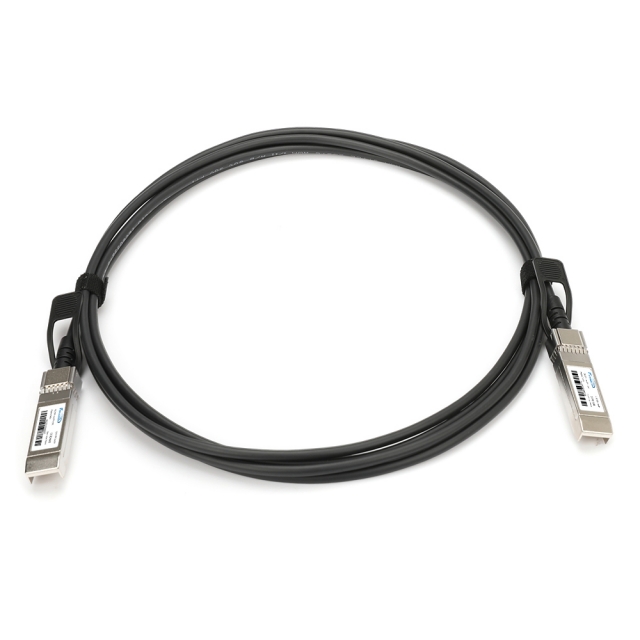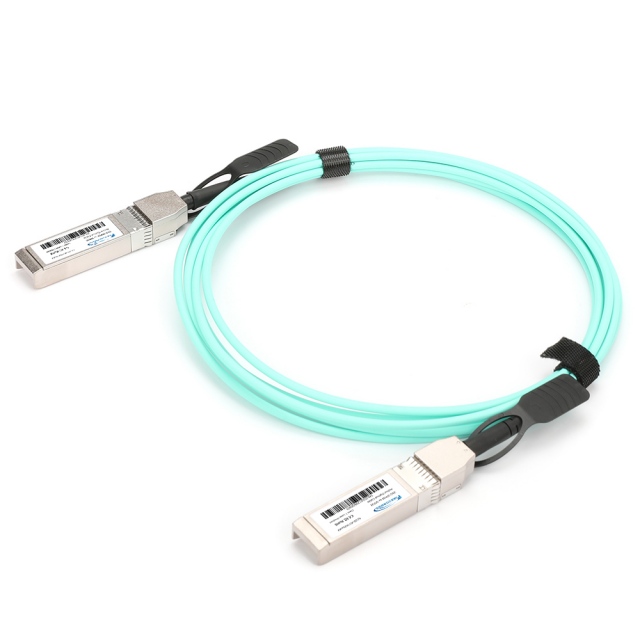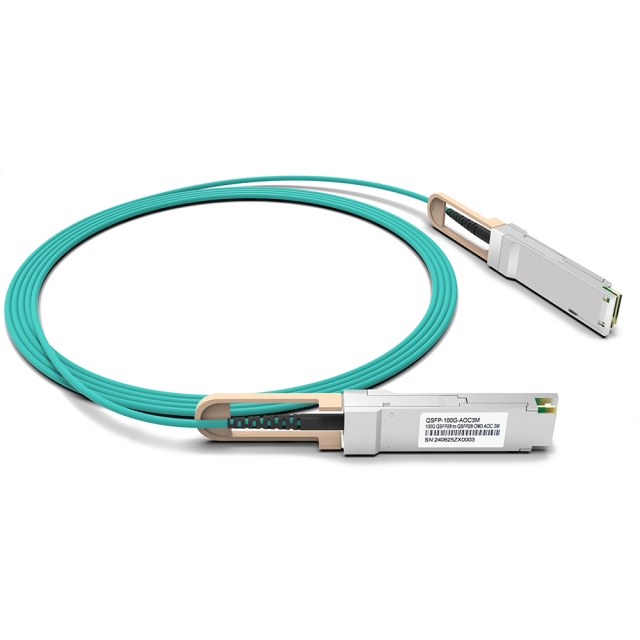Understanding 100G DAC and AOC Cables: Use Cases and Advantages
In the era of high-speed networking, 100G connectivity has become the standard for modern data centers and enterprise networks. Two of the most common options for 100G connections are Direct Attach Copper (DAC) cables and Active Optical Cables (AOC). Both play crucial roles in achieving efficient, high-performance networks, but they are designed for different scenarios.
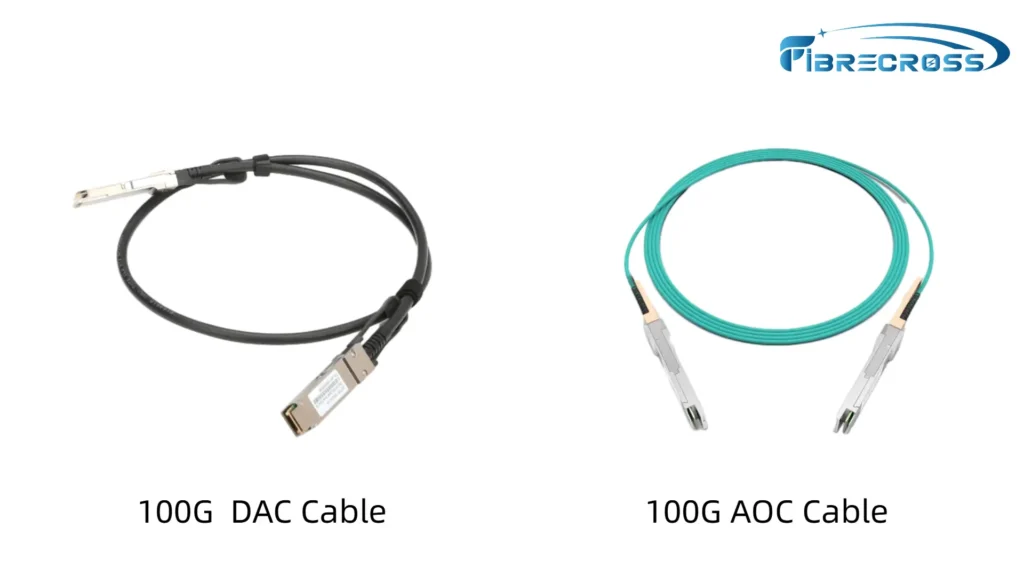
What is a 100G QSFP28 DAC Cable?
A 100G QSFP28 DAC Cable uses twinax copper wiring to connect two QSFP28 ports. It is a passive cable assembly that carries four 25G channels, combining to deliver 100Gbps of bandwidth.
Key Advantages:
Low cost: Copper assemblies are far more budget-friendly than fiber solutions.
Ultra-low latency: Direct electrical connections mean minimal delay.
Low power: Passive DAC cables require no extra power consumption.
Simple deployment: Plug-and-play installation with no configuration needed.
Use Cases:
Top-of-rack connections between servers and switches.
Short links between adjacent racks.
Latency-critical environments such as financial trading.
High-density deployments where short distances dominate.
What is a 100G QSFP28 AOC Cable?
A 100G QSFP28 AOC Cable uses optical fibers with built-in transceivers at each end. It converts electrical signals into light, enabling high-speed transmission over much longer distances compared to copper.
Key Advantages:
Extended reach: Supports distances up to 100 meters or more.
Stable performance: Immune to electromagnetic interference.
Flexible cabling: Thin, lightweight, and easier to manage than bulky copper.
Energy-efficient: Optimized active components consume low power.
Use Cases:
Inter-rack connections across rows in data centers.
Medium-distance links between switches and servers.
High-performance computing clusters requiring stable high-speed links.
Hyperscale cloud or enterprise data centers.

Breakout Solutions: 100G to 4x25G
Sometimes a single 100G port needs to connect to multiple 25G devices. This is where breakout cables come into play. They split one QSFP28 interface into four separate SFP28 channels, each carrying 25Gbps.
100G QSFP28 to 4x25G SFP28 Breakout DAC Cable
Uses passive copper for distances typically up to 5 meters.
Cost-effective and ultra-low latency.
Ideal for connecting a 100G switch port to four nearby 25G servers.
100G QSFP28 to 4x25G SFP28 Breakout AOC Cable
Uses fiber optics for distances up to 100 meters.
Provides reliable performance across racks or rows.
Perfect for environments where devices are not colocated.

DAC vs AOC: How to Choose?
Both DAC and AOC cables support 100G speeds but serve different needs:
Choose 100G DAC Cable when:
The connection distance is very short (within a rack or adjacent racks).
Low cost and ultra-low latency are top priorities.
Power efficiency and simplicity are important.
Choose 100G AOC Cable when:
The connection distance exceeds the 5-meter limit of copper.
EMI (electromagnetic interference) could affect signal quality.
Cabling flexibility and airflow are critical.
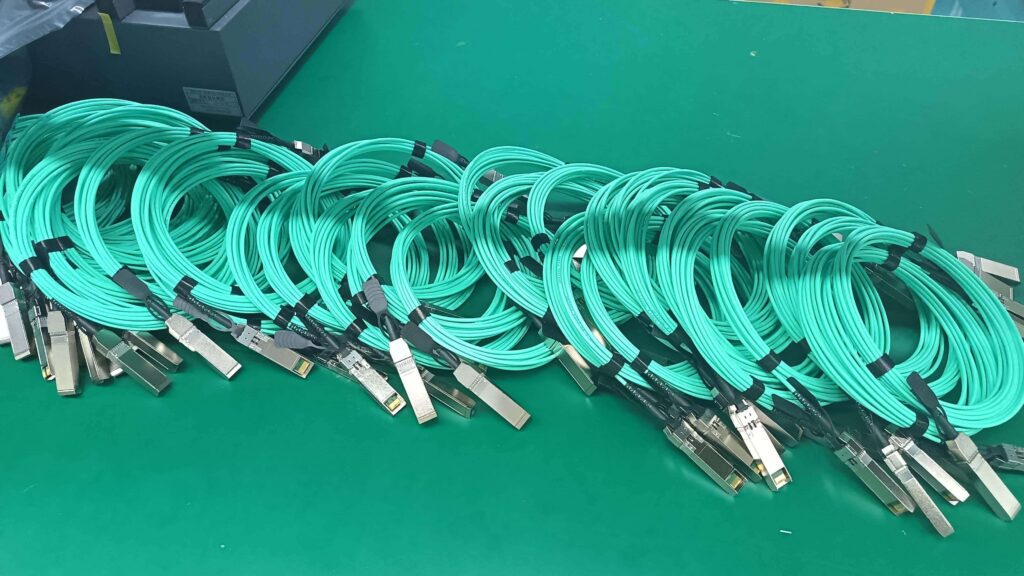
FAQ About 100G DAC VS AOC
A 100G DAC Cable uses copper wiring and is best for short-distance connections (up to about 5 meters) with very low latency and low cost. A 100G AOC Cable uses optical fiber and is designed for longer distances (up to 100 meters or more) with immunity to electromagnetic interference.
A 100G QSFP28 DAC Cable is ideal for top-of-rack connections, short server-to-switch links, or latency-sensitive environments. It’s the most cost-effective choice when devices are close to each other.
A breakout cable splits one 100G port into four individual 25G ports. The DAC version is used for short-distance copper connections, while the AOC version is used for longer fiber connections across racks or rows.
Neither is universally better—it depends on the application. DAC cables are best for short, cost-sensitive, and low-latency connections. AOC cables are preferred when longer distances, cable management, or interference immunity are important.
Final Thoughts
Both 100G QSFP28 DAC Cables and 100G QSFP28 AOC Cables are essential to modern data centers. DAC cables deliver simple, cost-effective, short-distance connections with the lowest latency, while AOC cables provide flexibility, longer reach, and interference-free operation.
Breakout options like 100G QSFP28 to 4x25G SFP28 Breakout DAC Cable and 100G QSFP28 to 4x25G SFP28 Breakout AOC Cable further enhance flexibility by allowing one 100G port to connect to four 25G devices.
By understanding their advantages and best-fit use cases, IT managers and network engineers can design scalable, efficient, and future-ready 100G infrastructures.

